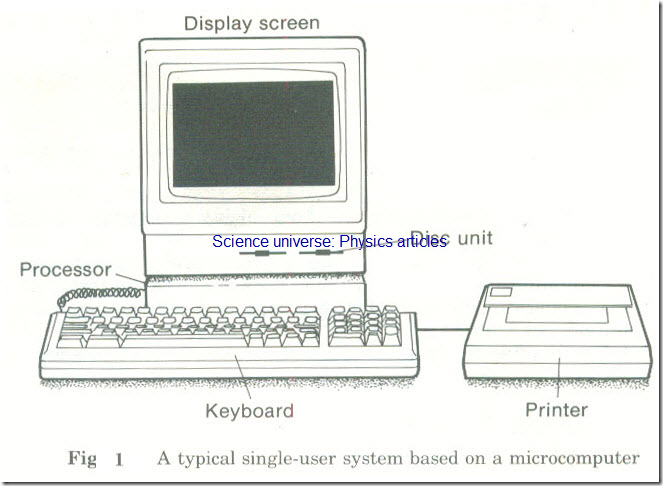PROCESSING SYSTEMS
There are many different ways of organizing a computer system. Anyone designing a system has to decide on:
1 The hardware-computers, storage, input and output devices.
2 Communications- between computers and between terminals and computers.
3 The operating system-this very important software organizes the running of the computer system .
4 Other software-this includes utilities, languages and applications programs.
Real-time Processing
A real-time system is one which processes data without significant delay.
CHARACTERISTICS OF REAL-TIME SYSTEMS
1 The computer is waiting for input. As soon as the data is received it is processed, and results can be output straight away.
2 Because the output can be produced quickly it may be used to influence the input. For example, if a computer oversteers a spaceship (example 5 below) it can be adjusted back before any harm is done.
3 The computer is usually running the same program all the time. In fact the computer is often dedicated to the real-time application.
A dedicated processor is one which is working on a particular application and on nothing else. It just runs the same program all the time.
Examples of real-time systems
1 An analogue computer .
2 A machine controlled by a computer, e.g. a ‘robot’ used in car manufacture.
3 A network controlled by a computer, e.g. the pipelines and pumping stations owned by a Gas Board. The controlling computer communicates with the stations by microwave transmissions at regular intervals, and pressures are adjusted when necessary. (See Fig 1)
4 An interactive game where the user has to react to what is happening on a computer screen by pressing keys quickly.
5 A computer controlling a space flight.
6 An airline flight-booking system.
Advantages and disadvantages of real-time processing
Advantage
fast response. Output from the computer may be used to adjust and improve the input.
Disadvantage
A computer being used for a real-time application often cannot be used for anything else.
Single-User Systems-Microcomputers
A single-user system is one where only one person can use the computer at a time, interacting directly with its operating system to run programs. Microcomputers are usually used in this way. A typical system would have a keyboard, a screen, a floppy disc unit and a character printer.
Examples of the use of a microcomputer as a single-user system
1 As a ‘home’ computer.
2 In a neweagent’s shop to store details of the newspapers required by customers, to organize the newspaper rounds and to work out customers’ accounts.
3 In an office as a word processor .
Fig 1 A typical single-user system based on a microcomputer
Advantages and disadvantages of single-user systems
Advantages
1 Inexpensive-cheap enough to be used:
(a) As a home computer.
(b) By a small business.
(c) In schools for teaching and administration purposes.
(d) Dedicated to one application, such as process control or word-processing.
2 The user bas better control over:
(a) The uses to which the computer is put.
(b) What changes are made to the system.
(c) Security.
(d) Maintenance.
3 Mobile and small-a microcomputer can be:
(a) Moved from place to place.
(b) Attached to equipment in order to control it.
4 Robust and reliable-microcomputers can function in more variable conditions than larger computers.
Disadvantages
In comparison with a mainframe computer a single-user system often has:
1 Slower processing.
2 Less storage.
3 Fewer and slower peripherals.
4 Less sophisticated software.
These disadvantages can be partly overcome if the single-user system is able to communicate with larger systems. For example, it may be used as a workstation in a network .

